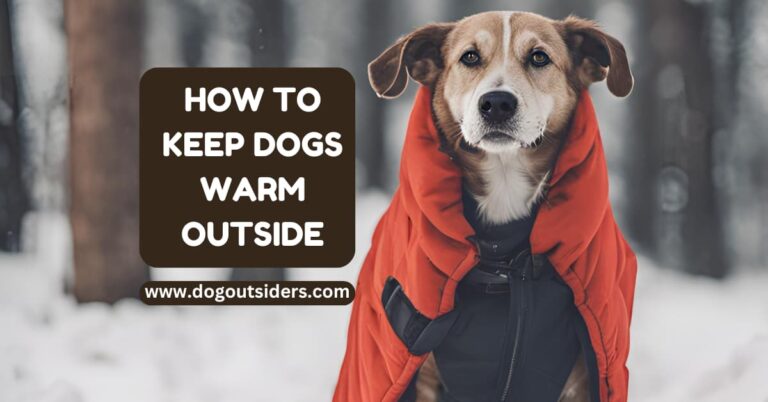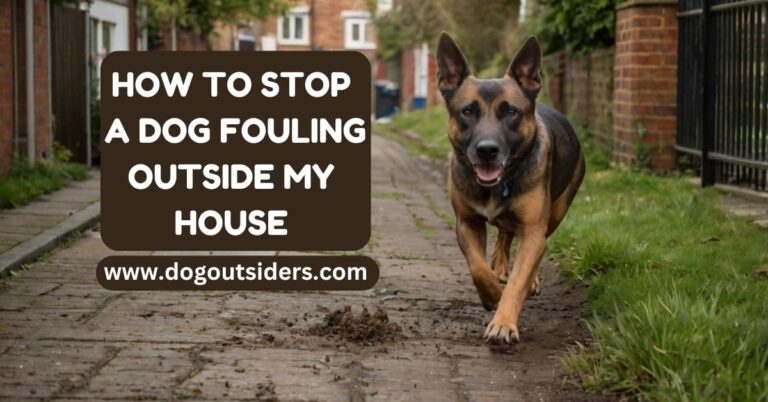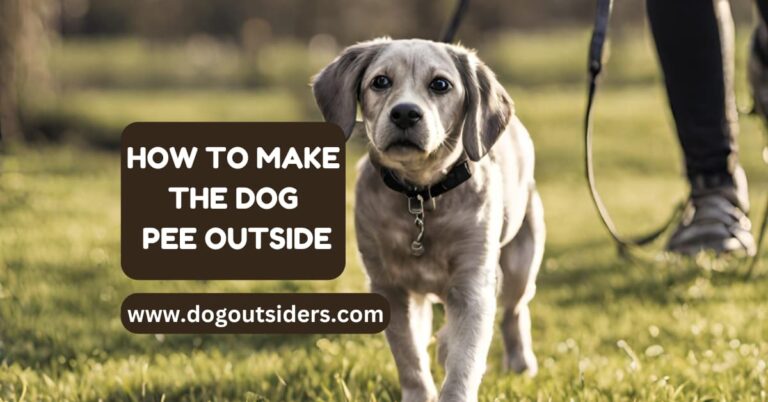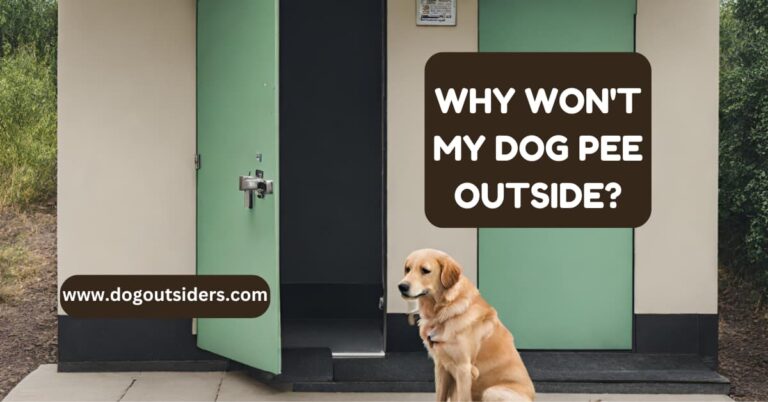Training a dog to urinate outside is a crucial aspect of pet ownership. Consistent routines, positive reinforcement, and patience are key elements in successfully teaching your furry friend this behavior. Establishing a designated potty area, rewarding good behavior, and maintaining a regular schedule are effective strategies. Understanding your dog’s body language and cues can also aid in timely outdoor bathroom breaks. Avoiding punishment for accidents indoors and staying persistent in the training process are essential for long-term success. By following these tips and remaining dedicated to the training process, you can teach your dog to urinate outside reliably.
Benefits of Outdoor Training
Health Benefits
Outdoor training provides fresh air and exercise, promoting your dog’s overall well-being and physical health. The exposure to the outdoors helps in preventing health issues associated with a sedentary lifestyle. Regular outdoor potty breaks contribute to improved digestion and metabolism in dogs.
Establishing Routine
Training your dog to urinate outside establishes a consistent routine for them, aiding in better bladder control and predictability. By setting specific times for outdoor potty breaks, your dog learns to associate certain cues with the need to relieve themselves outside. This routine also helps in reducing accidents inside the house.
Behavior and Socialization
Outdoor training has a positive impact on your dog’s behavior and socialization skills. Being outdoors exposes your dog to various stimuli, such as different sounds, sights, and smells, helping them become more adaptable and confident. Interacting with other dogs during outdoor potty breaks can enhance their social skills.
In my experience, outdoor training significantly improved my dog’s overall behavior and temperament. The fresh air and exercise helped in reducing their anxiety levels and hyperactivity. Establishing a routine for outdoor potty breaks made it easier for me to predict when my dog needed to go outside.
Best Training Techniques to Teach Your Dog to Urinate Outside
| Technique | Advantages |
| Crate Training | Helps establish a routine for bathroom breaks, teaches bladder control, and prevents accidents indoors |
| Positive Reinforcement | Encourages desired behavior through rewards, strengthens the bond between dog and owner |
| Consistent Schedule | Establishes predictability for the dog, helps them learn when to expect bathroom breaks |
| Supervised Outdoor Time | Allows for immediate reinforcement of desired behavior, prevents accidents indoors |
| Potty Pads | Can be used as a transitional tool for indoor potty training, convenient for puppies or senior dogs |
| Clicker Training | Provides clear communication with the dog, helps reinforce the desired behavior |
| Verbal Cues | Teaches the dog to associate a specific command with urinating outside, aids in communication with the dog |
| Patience and Persistence | Essential for successful training, allows for consistency in teaching the desired behavior |
| Regular Exercise | Helps regulate the dog’s bathroom habits, reduces the likelihood of accidents indoors |
| Professional Training Classes | Offers guidance from experienced trainers, provides personalized advice for your specific dog training needs |
Spend Quality Time with Your Dog

Bonding Time
Dedicate quality time daily to bond with your dog and strengthen your relationship. Engage in activities that your dog enjoys, such as playing fetch or going for a walk. This bonding time helps build trust and reinforces positive behavior.
Playtime and Walks
Engage in playtime or walks to create a comfortable environment for training. Physical activity not only helps with training but also keeps your dog healthy and happy. Regular walks can also help regulate your dog’s bathroom schedule.
Body Language Observation
Observe your dog’s body language to better understand their needs and progress. Pay attention to signs like sniffing, circling, or whining, which may indicate the need to go outside. Understanding your dog’s cues is crucial for successful potty training.
Embrace Crate Training
Gradual Introduction
Introduce the crate slowly to prevent fear and anxiety in your dog. Start by placing treats near the crate to create a positive association.
Give your dog time to explore the crate at their own pace. Avoid forcing them inside or closing the door too soon.
Gradually increase the time your dog spends inside the crate, starting with short intervals and extending them as they become more comfortable.
Safe Space Establishment
Make the crate a safe haven where your dog can relax and feel secure. Add comfortable bedding and toys to make it inviting.
Ensure the crate is large enough for your dog to stand up, turn around, and lie down comfortably.
Avoid using the crate as a form of punishment to maintain its positive association in your dog’s mind.
Positive Reinforcement
Reinforce positive associations with the crate through treats and praise. Reward your dog when they willingly enter the crate on their own.
Use verbal cues like “crate time” to help your dog understand when it’s time to go inside.
Consistency is key in crate training; establish a routine for meals, playtime, and potty breaks to create a sense of predictability for your dog.
Establish a Consistent Schedule
Create a Feeding Routine
Establishing a potty training schedule begins with creating a consistent feeding routine for your dog. By feeding your dog at the same times each day, you can predict when they will need to go outside. This helps regulate their bathroom breaks and establishes a pattern for potty training success.
Monitoring your dog’s behavior after meals is crucial. Look for signs such as sniffing around, circling, or whining, indicating that they may need to eliminate. Taking them outside immediately after these behaviors can reinforce the association between going potty and being outdoors.
Adjust According to Growth
As your dog grows, their potty needs will change. Puppies have smaller bladders and higher metabolism, requiring more frequent bathroom breaks. Gradually adjust the schedule as they age and can hold their bladder for longer periods. Adapting to their evolving needs ensures effective potty training results.
Personal Experience: When I trained my dog to urinate outside, I found that sticking to a consistent feeding schedule made a significant difference. By observing his behavior closely after meals, I could anticipate when he needed to go out, leading to quicker potty training progress.
Reinforce Positive Behavior
Consistency is key in establishing a successful potty training routine. Praise and reward your dog every time they eliminate outside. Positive reinforcement reinforces the desired behavior and encourages them to continue urinating outdoors. Use treats or verbal praise to show your appreciation for their good behavior.
Creating a potty training chart can help track your dog’s progress and identify patterns in their bathroom habits. Note down the times they eliminate and any accidents indoors to refine your schedule accordingly. This visual aid can be a useful tool in optimizing your potty training efforts.
Use the Leash Effectively
Keep Close
Keep your dog close on a leash to minimize distractions during potty time. This helps maintain control over your dog’s movements, making it easier to guide them to the designated potty area. By doing so, you create a focused environment for successful potty training.
Associate Area
Train your dog to associate a specific area with going potty. Consistency is key in reinforcing this behavior. Over time, your dog will learn to recognize that particular spot as their bathroom area. This method contributes to developing great potty skills in your pet.
Consistent Commands
Use consistent commands to signal to your dog when it’s time to relieve themselves. By employing the same phrases or cues each time, your dog will begin to associate these words with the action of urinating outside. This practice aids in reinforcing full bladder control in your pet.
Manage Accidents Properly
Clean Up
Clean up doggie accidents promptly using an enzymatic cleaner to eliminate odors completely. This step is crucial in preventing your dog from returning to the same spot.
Maintain a calm demeanor while cleaning up accidents to avoid causing stress to your dog. Dogs are sensitive to their owner’s emotions, so staying composed is essential for effective training.
Positive Reinforcement
After cleaning up, use positive reinforcement to encourage your dog to urinate outside. Reward your dog with treats or praise when they go potty in the designated area.
Implement a consistent schedule for bathroom breaks to help your dog understand when and where they should relieve themselves. Consistency is key in reinforcing good habits.
Establish Boundaries
Create boundaries within your home to prevent accidents. Use baby gates or close doors to restrict access to areas where accidents are more likely to occur.
Invest time in puppy-proofing your living space by removing items that may tempt your dog to urinate indoors. Providing a safe environment reduces the chances of accidents happening.
Seek Professional Help
If you’re struggling with house training, consider seeking guidance from a professional dog trainer. They can provide personalized tips and strategies based on your dog’s behavior and needs.
Consulting a veterinarian is also advisable if your dog continues to have frequent accidents despite consistent training efforts. Underlying health issues could be contributing to the problem.
Transition from Pads to Outdoors
Positioning the Potty Pad
When transitioning from indoor pee pads to outdoor potty habits, it’s crucial to strategically position the potty pad. Place the pad closer to the door, gradually moving it outside over time. This gradual shift helps your dog associate the outdoor area with their designated potty spot.
Encouraging Outdoor Potty Time
To encourage outdoor potty training, start by taking your dog to the designated spot frequently. Praise and reward them when they use the outdoor area successfully. Consistency is key in reinforcing this behavior and establishing a routine for potty breaks.
Reinforcing Desired Behavior
As your dog begins to understand the transition, make sure to reward them each time they choose to urinate outside. Positive reinforcement plays a significant role in shaping their behavior. Consider using verbal cues or commands to signal when it’s potty time.
Personal Insights:
I found that creating a positive association with the outdoor potty area is essential. By spending quality time with my dog in that spot, I noticed a significant improvement in their willingness to use it. Patience and consistency were key in this process.
Additional Tips:
- Gradually reduce the size of the indoor pee pads to encourage outdoor potty habits.
- Establish a routine for potty breaks to help your dog anticipate when it’s time to go outside.
Stay Positive and Patient
Maintain Positivity
Training your dog to urinate outside requires consistency and a positive approach. Reinforce good behavior with treats and praise to create a positive association with going outside.
It’s essential to remain calm and avoid getting frustrated if accidents happen. Dogs respond well to positive reinforcement, so focus on rewarding desired behaviors.
Celebrate Small Victories
Celebrate each successful outdoor bathroom break with enthusiasm. Reinforce the behavior by giving treats or extra playtime as a reward.
Remember that dogs thrive on positive feedback, so make sure to show your appreciation for their efforts. By celebrating small wins, you’ll keep both yourself and your furry friend motivated throughout the training process.
Be Patient and Understanding
Every dog is unique, so it’s crucial to be patient and understanding during the training period. Avoid rushing the process and give your dog time to adjust to the new routine.
Understand that accidents may happen, especially during the initial stages of training. Stay patient and continue to provide gentle guidance and encouragement for your pet.
Conclusion:
Training your dog to urinate outside requires dedication, consistency, and patience. Spending quality time with your furry companion, embracing crate training, establishing a routine, using the leash effectively, managing accidents properly, transitioning from pads to outdoors, and maintaining a positive attitude are all key steps in this process. Remember to be patient with your pet and celebrate every success along the way.
For a successful outdoor training experience, continue to follow the steps outlined and adapt them to suit your dog’s individual needs. With time and persistence, you will see progress. Keep in mind that every dog is unique, so be attentive to your pet’s behavior and adjust your training methods accordingly. Stay positive, remain consistent, and soon enough, your dog will master the art of urinating outside. Good luck on your training journey!
FAQ’s:
Outdoor training helps dogs associate urination with the outdoors, reducing indoor accidents. It provides mental stimulation, exercise, and fresh air, contributing to overall well-being.
Set specific times for outdoor breaks, especially after meals and naps. Monitor your dog’s behavior for signs of needing to urinate and take them outside promptly.
Crate training can aid in housebreaking by teaching dogs to hold their bladder. It also creates a den-like environment where dogs are less likely to urinate, encouraging them to wait until they are outside.
Positive reinforcement, such as treats or praise, rewards your dog for urinating outside, reinforcing good behavior. This method helps dogs understand what is expected of them and encourages them to repeat desired actions.
Gradually move the pee pads closer to the door leading outside. Once your dog consistently uses the pad near the door, start taking them outside to the designated potty area. Praise and reward them for urinating outdoors to reinforce the behavior.







One Comment